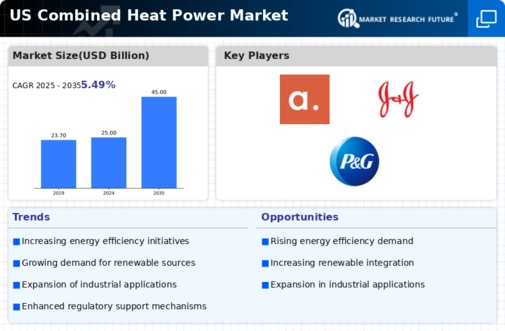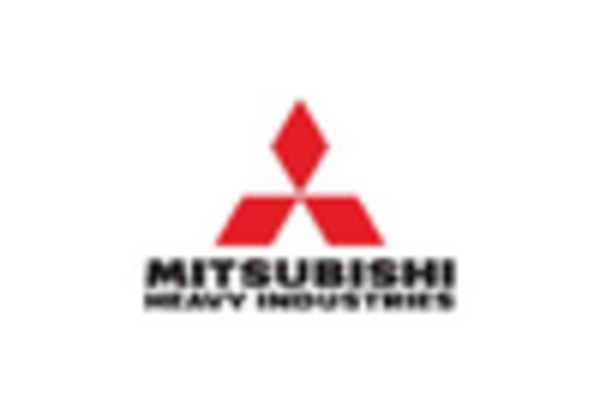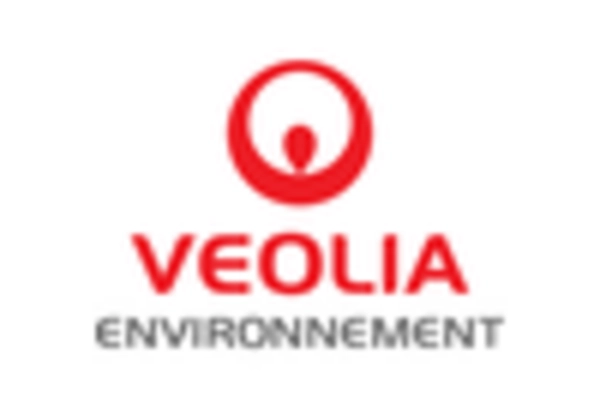The combined heat-power market is currently characterized by a dynamic competitive landscape, driven by increasing demand for energy efficiency and sustainability. Major players such as General Electric (US), Siemens (DE), and Mitsubishi Heavy Industries (JP) are actively positioning themselves through innovation and strategic partnerships. General Electric (US) focuses on enhancing its technological capabilities, particularly in digital solutions that optimize energy management. Siemens (DE) emphasizes its commitment to sustainability, integrating renewable energy sources into its combined heat-power systems. Meanwhile, Mitsubishi Heavy Industries (JP) is expanding its global footprint, particularly in emerging markets, thereby shaping a competitive environment that prioritizes technological advancement and environmental responsibility.
Key business tactics within this market include localizing manufacturing and optimizing supply chains to enhance operational efficiency. The competitive structure appears moderately fragmented, with several key players exerting influence over market dynamics. This fragmentation allows for a diverse range of solutions and innovations, as companies strive to differentiate themselves through unique offerings and customer-centric approaches.
In September 2025, General Electric (US) announced a partnership with a leading renewable energy firm to develop hybrid systems that integrate solar and combined heat-power technologies. This strategic move is likely to enhance GE's product portfolio, positioning it as a leader in sustainable energy solutions. The collaboration may also facilitate access to new markets, aligning with the growing trend towards decarbonization.
In October 2025, Siemens (DE) unveiled a new digital platform designed to optimize the performance of combined heat-power plants. This initiative reflects Siemens' focus on digital transformation, enabling operators to leverage data analytics for improved efficiency and reduced operational costs. Such advancements could potentially redefine operational standards within the industry, fostering a more competitive environment.
In August 2025, Mitsubishi Heavy Industries (JP) completed the acquisition of a regional player specializing in energy storage solutions. This acquisition is indicative of Mitsubishi's strategy to diversify its offerings and enhance its capabilities in integrated energy solutions. By incorporating energy storage, the company may better address the challenges of intermittent renewable energy sources, thereby strengthening its market position.
As of November 2025, current competitive trends are increasingly defined by digitalization, sustainability, and the integration of artificial intelligence (AI) into operational processes. Strategic alliances are becoming more prevalent, as companies recognize the value of collaboration in driving innovation and enhancing market reach. Looking ahead, competitive differentiation is expected to evolve, shifting from traditional price-based competition to a focus on technological innovation, reliability in supply chains, and sustainable practices. This transition may ultimately reshape the landscape of the combined heat-power market, fostering a more resilient and forward-thinking industry.

















Leave a Comment